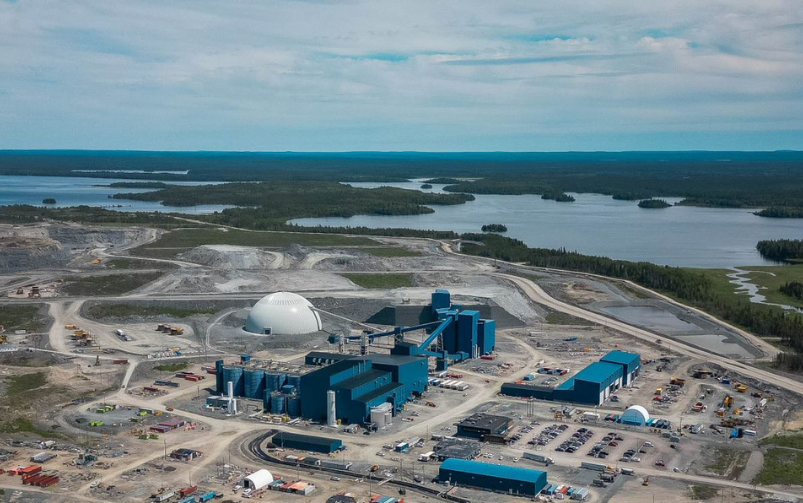The report mentioned that declining copper discoveries are threatening the future projected demand for critical minerals. Copper is a key component for renewable technologies, such as wind turbines. Courtesy of Inga Spence via Alamy.
Global professional services firm EY released a report on Oct. 1 highlighting the top 10 business risks and opportunities for mining and metals companies in 2025. The insights were gathered over the summer from hundreds of senior leaders in the sector.
The report acknowledged the urgency of the energy transition and how it is disrupting the mining and metals sector, influencing risks and opportunities for the upcoming year, and urged companies to improve methods for extracting critical minerals to meet rising demand while also protecting the environment.
Capital
Capital emerged as the leading risk for respondents in 2025, with miners facing increased scrutiny from investors about how their funds are allocated, particularly in regards to capital discipline and returns.
The report stated that a key capital-related trend is that companies are driving growth and enhancing value through mergers and acquisitions, while also divesting non-core assets. Given ongoing macroeconomic challenges, mining firms are also likely to pursue partnerships and joint ventures to help alleviate risks on larger projects.
“What’s clear from this year’s study is that capital has emerged as the number one risk for mining companies, signalling a need to shift gears,” said Lee Downham, EY Europe, Middle East, India and Africa (EMEIA) mining and metals leader, in an Oct. 1 press release. “Miners must move from focusing solely on short-term returns to prioritizing long-term value creation. While they have a strong track record of capital discipline, it's now crucial to balance this with strategic investments that drive sustainable growth.”
Environmental stewardship
With environmental, social and governance (ESG) ranking among the top risks in EY’s annual risks and opportunities reports for the past four years, the “E” in ESG took precedence this year.
Water and waste were key priorities for respondents and are pushing companies to pursue innovative projects that can capture value. Nearly half of respondents felt confident in meeting their nature-positive commitments. The report also highlighted the important role of partnering with Indigenous communities in achieving these goals due to their expertise in sustainable land management.
Geopolitics
Regarding geopolitical risk, the report documented that rising resource nationalism has affected tax rules and ownership rights.
To promote large-scale projects necessary for the energy transition, the report advised that governments should create tax policies that encourage large, initial capital investment in long-term mining projects.
The report suggested that miners may need to adopt different strategies for projects in specific regions of the world, such as forming joint ventures and partnerships with local companies, which can help mitigate investment risks for new projects located in certain countries.
New risks
The report identified two new risks to be aware of this year: resource and reserve depletion ranked fourth and new projects ranked eighth.
Factors influencing resource depletion include declining ore grades, rising extraction costs and fewer discoveries. In response, companies are exploring solutions like advanced technologies to enhance exploration and productivity. For example, Rio Tinto's Nuton technology uses leaching to recover up to 85 per cent of metals from lower-grade ores.
On the new projects front, the report noted that the sector must extract more mineral ores in the next 30 years than in the past 70,000 to meet growing demand. Challenges include regulatory hurdles, high development costs and a shortage of skilled workers. To address these issues, companies are engaging stakeholders early on in the project process to resolve potential conflicts and expedite approvals.
Mitchell noted that one surprising finding during this year’s survey was that workforce was not considered to be a key risk by 55 per cent of participants. “Given the sector’s significant challenges in attracting and retaining the talent needed to grow, this omission from the radar is alarming,” he said.
The report also said that cybersecurity, digital initiatives and the “G” in ESG did not make the list, even though these are critical issues for the sector. It urged miners to stay on top of cybersecurity risks, digital innovation and to invest in strong governance policies.
“The year ahead calls for decisive action,” the report stated. “Mitigating risks and making the most of opportunities requires companies to take a proactive, diversified approach to transformation. Reviewing and adapting current business models, adapting new ones and pushing ahead with partnerships and innovation can help companies seize competitive advantage while meeting demand in a sustainable, optimal way.”




